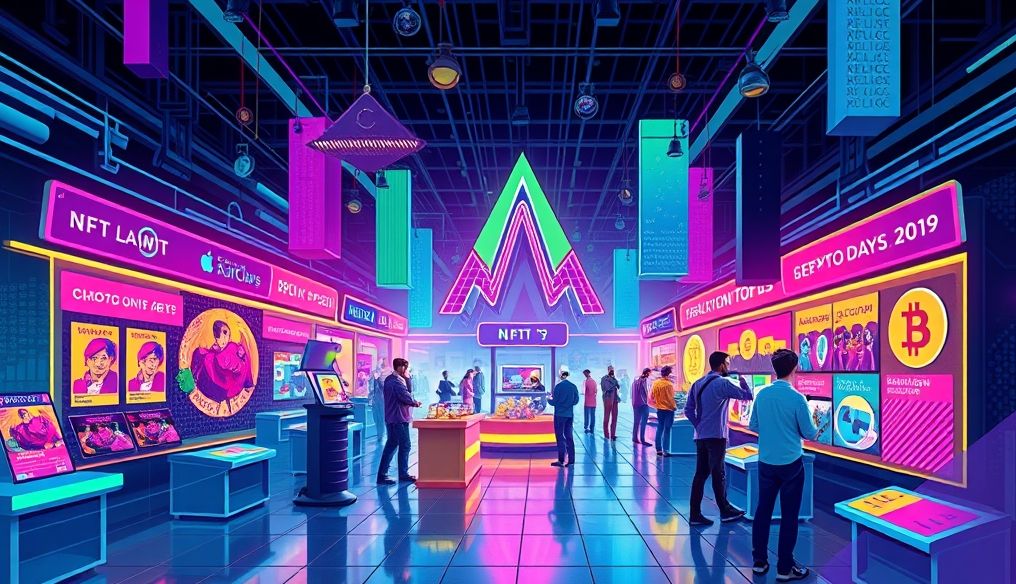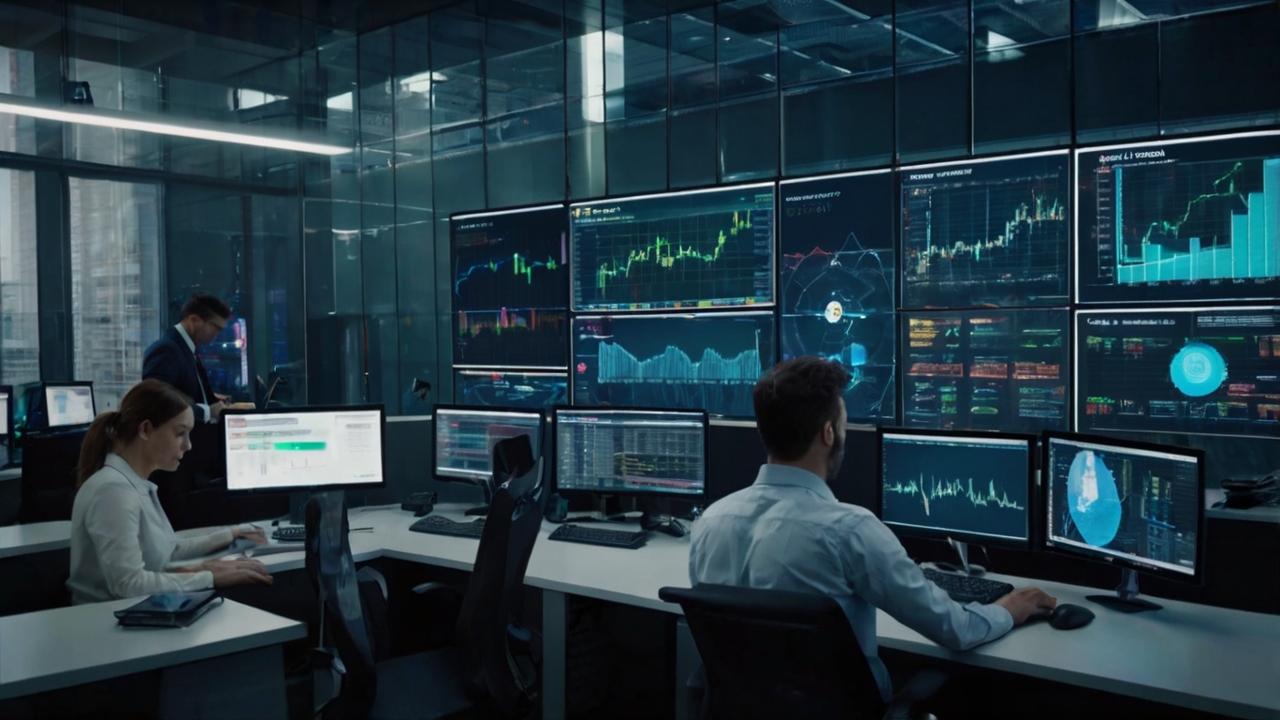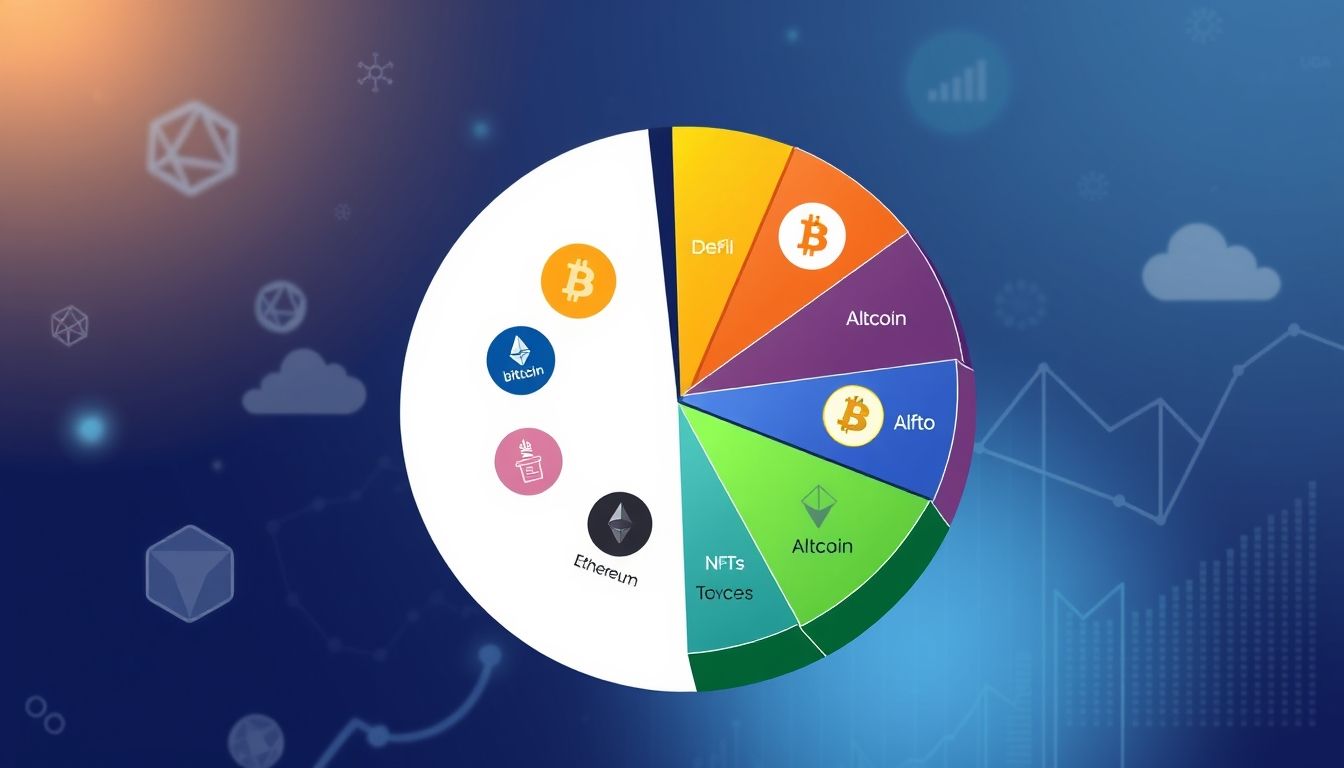مقدمة إلى الرموز غير القابلة للاستبدال (NFTs)
الرموز غير القابلة للاستبدال (NFTs) هي أصول رقمية فريدة تمثل ملكية عنصر أو محتوى معين، سواء كان فنًا أو موسيقى أو عناصر داخل الألعاب أو غيرها. تختلف NFTs عن العملات المشفرة الأخرى مثل البيتكوين، حيث أن كل NFT فريد من نوعه ولا يمكن استبداله بآخر. تعتمد NFTs على تقنية البلوك تشين، مما يضمن الشفافية والأمان في عمليات البيع والشراء.
تاريخ تطور NFTs
بدأت فكرة NFTs في عام 2014 مع مشروع Colored Coins على بلوك تشين البيتكوين. ومع ذلك، اكتسبت NFTs شعبية كبيرة في عام 2017 مع ظهور CryptoPunks و CryptoKitties على بلوك تشين الإيثيريوم. CryptoKitties، على وجه الخصوص، أثارت ضجة كبيرة وأظهرت إمكانات NFTs في مجال الألعاب والمقتنيات الرقمية.
كيف تعمل تقنية NFT؟
تعتمد NFTs على معيار ERC-721 على بلوك تشين الإيثيريوم، وهو معيار يسمح بإنشاء رموز فريدة وغير قابلة للاستبدال. يتم تخزين بيانات NFT، مثل وصف الأصل الرقمي ومالكه، على البلوك تشين، مما يضمن عدم إمكانية التلاعب بها أو تغييرها. عند شراء NFT، يتم تسجيل الملكية على البلوك تشين، مما يمنح المشتري الحق الحصري في الأصل الرقمي.
حالات استخدام NFTs في الفن الرقمي
الفن المرئي
أحدثت NFTs ثورة في سوق الفن الرقمي، حيث سمحت للفنانين ببيع أعمالهم مباشرة إلى الجمهور دون الحاجة إلى وسطاء. يمكن للفنانين الآن إنشاء نسخ رقمية فريدة من أعمالهم وبيعها كـ NFTs، مما يمنحهم سيطرة كاملة على حقوق الملكية الفكرية وأرباحهم.
مثال: بيع عمل فني رقمي للفنان Beeple مقابل 69 مليون دولار في مزاد Christie's.
الموسيقى
تسمح NFTs للموسيقيين ببيع أغانيهم وألبوماتهم مباشرة إلى المعجبين، مما يمنحهم حصة أكبر من الأرباح ويقلل من اعتمادهم على شركات الإنتاج. يمكن للموسيقيين أيضًا إصدار NFTs تتضمن حقوقًا حصرية، مثل الوصول إلى محتوى حصري أو لقاء الفنان.
مثال: إصدار Kings of Leon ألبومهم الأخير كـ NFT مع مزايا إضافية للمشترين.
الألعاب
تستخدم NFTs في الألعاب لتمثيل العناصر الافتراضية، مثل الأسلحة والدروع والشخصيات. يمكن للاعبين شراء وبيع هذه العناصر كـ NFTs، مما يمنحهم ملكية حقيقية للعناصر التي يمتلكونها في اللعبة. هذا يخلق اقتصادًا افتراضيًا داخل اللعبة حيث يمكن للاعبين كسب المال من خلال اللعب.
مثال: لعبة Axie Infinity التي تعتمد على NFTs حيث يمكن للاعبين جمع وتربية وتداول مخلوقات Axie.
فوائد الاستثمار في NFTs
- تنويع المحفظة الاستثمارية: يمكن أن تكون NFTs إضافة قيمة إلى المحفظة الاستثمارية، خاصة للمستثمرين الذين يبحثون عن أصول بديلة.
- إمكانية تحقيق عوائد عالية: شهد سوق NFTs نموًا هائلاً في السنوات الأخيرة، مما أدى إلى تحقيق عوائد كبيرة للمستثمرين الأوائل.
- دعم الفنانين والمبدعين: يساهم شراء NFTs في دعم الفنانين والمبدعين مباشرة، مما يساعدهم على الاستمرار في إنتاج أعمالهم.
مخاطر الاستثمار في NFTs
- تقلبات السوق: سوق NFTs متقلب للغاية، وقد تفقد NFTs قيمتها بسرعة.
- الاحتيال: هناك العديد من عمليات الاحتيال في سوق NFTs، لذا يجب على المستثمرين توخي الحذر وإجراء البحوث اللازمة قبل الشراء.
- عدم اليقين التنظيمي: لا يزال الإطار التنظيمي لـ NFTs غير واضح في العديد من البلدان، مما يزيد من المخاطر القانونية.
كيفية شراء وبيع NFTs
- اختيار منصة تداول NFTs: هناك العديد من منصات تداول NFTs، مثل OpenSea و Rarible و SuperRare. يجب اختيار المنصة التي تناسب احتياجاتك وميزانيتك.
- إنشاء محفظة رقمية: تحتاج إلى محفظة رقمية متوافقة مع NFTs لتخزين NFTs والعملات المشفرة المستخدمة في الشراء والبيع.
- شراء NFTs: بعد إيداع الأموال في محفظتك الرقمية، يمكنك البدء في تصفح NFTs المعروضة للبيع وشراء تلك التي تثير اهتمامك.
- بيع NFTs: يمكنك بيع NFTs التي تمتلكها على منصة التداول التي اخترتها. يجب تحديد سعر البيع بعناية بناءً على قيمة الأصل الرقمي وظروف السوق.
التحديات التي تواجه سوق NFTs
على الرغم من النمو الهائل الذي شهده سوق NFTs، إلا أنه لا يزال يواجه العديد من التحديات، مثل:
- ارتفاع رسوم المعاملات: يمكن أن تكون رسوم المعاملات على بلوك تشين الإيثيريوم مرتفعة للغاية، مما يجعل شراء وبيع NFTs مكلفًا.
- الأثر البيئي: تستهلك عملية تعدين العملات المشفرة، التي تدعم NFTs، كميات كبيرة من الطاقة، مما يثير مخاوف بشأن الأثر البيئي.
- الوصول إلى الجمهور: لا يزال الوصول إلى سوق NFTs محدودًا، خاصة بالنسبة للفنانين والمبدعين في البلدان النامية.
مستقبل NFTs
من المتوقع أن يستمر سوق NFTs في النمو في السنوات القادمة، مع ظهور تطبيقات جديدة ومبتكرة. يمكن أن تلعب NFTs دورًا مهمًا في مجالات مثل:
- الواقع الافتراضي والواقع المعزز: يمكن استخدام NFTs لتمثيل العناصر الافتراضية في عوالم الواقع الافتراضي والواقع المعزز.
- إدارة حقوق الملكية الفكرية: يمكن استخدام NFTs لتسهيل إدارة حقوق الملكية الفكرية وتوزيع الأرباح على أصحاب الحقوق.
- التذاكر والأحداث: يمكن استخدام NFTs كبديل للتذاكر التقليدية، مما يمنع التزوير ويضمن وصول التذاكر إلى المعجبين الحقيقيين.
نصائح للمستثمرين في سوق NFTs
- إجراء البحوث اللازمة: قبل الاستثمار في أي NFT، يجب إجراء البحوث اللازمة حول الفنان أو المبدع والأصل الرقمي وظروف السوق.
- تنويع الاستثمارات: لا تستثمر كل أموالك في NFT واحد، بل قم بتنويع استثماراتك لتقليل المخاطر.
- توخي الحذر من عمليات الاحتيال: كن حذرًا من عمليات الاحتيال والعروض المشبوهة. لا تشارك معلوماتك الشخصية أو بيانات محفظتك الرقمية مع أي شخص.
- الاستثمار على المدى الطويل: لا تتوقع تحقيق أرباح سريعة من NFTs. الاستثمار في NFTs هو استثمار طويل الأجل يتطلب الصبر والتحليل المستمر.




